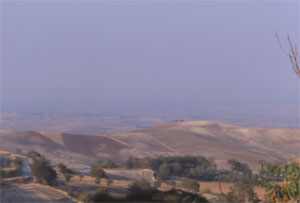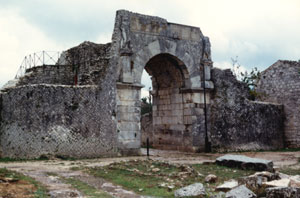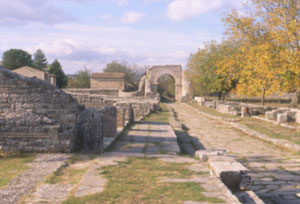![]() The
transhumance routes
The
transhumance routes
The word tratturo (sheep-track), a phonetic distortion of the Latin word tractoria, appears during the last centuries of the Roman Empire. Nowadays sheep-tracks (with secondary routes : tratturelli and bracci) are often barely visible, since no constructions exist to mark the route and because they are no more that tracks shaped by the repeated passage of animals. Their outline, however, is clearly noticeable from aerial photographs that show the differences in the vegetation.
 |
The Pescasseroli-Candela sheep-track
It is 211 km long with a width that ranges from 48 to 111 m. It
crosses important centres of Molise: Saepinum (founded
between the 2nd and 1st centuries B.C.),
which is also called "sheep-track city", and Bovianum
(located at a major crossroads; the toponym seems to originate
from the large cattle fairs that it hosted).
The Castel di Sangro-Lucera sheep-track
Ponte Zittola (in the Abruzzo region) marks the beginning of this
sheep-track that stretches largely through Molise, preserving,
unlike the other sheep-tacks, the almost total integrity of the
original route. This sheep-track runs through an area that has the
largest number of fortifications: Roccasicura, Pescolanciano,
Duronia, Castropignano, S.Stefano, Oratino, Campobasso and
Gambatesa. It original width (111 m.) is visible only for short
sections.
 |
Montelongo |
 |
Sepino |
 |
Sepino |
The other important sheep-tracks that cross Molise are : Aquila-Foggia, Celano-Foggia, Centurelle-Montesecco. The most original and interesting architectural remains found along the sheep-tracks are the shepherds’ shelters and the pubs (the most ancient ones date back to Roman times).